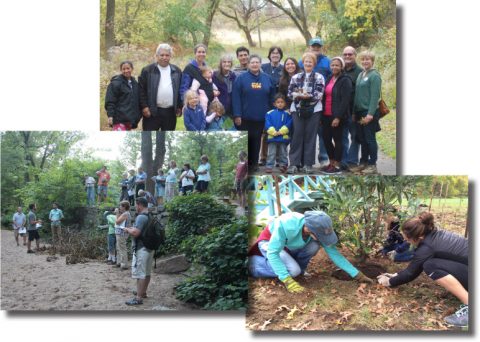
When it comes to the clean water world, there are stories, and then there are Stories with a capital S – the kind we can use to help communities understand the issues, and more importantly understand that there are solutions. These kinds of Stories feature real people, real challenges, and real solutions. In our fast-moving digital universe, they’re harder to find. But when we find them, they do a job that we can’t do ourselves: they reach people with news they can use, pathways to a sustainable future for our communities and our kids and grandkids.
One of those came our way last week with a truly thoughtful and inspiring piece in the Philadelphia Inquirer; a piece that connected so many dots, from climate change’s heavy rains to aging infrastructure to the natural solutions we know work the best.
Reflecting on this coverage, and on a few other pieces that we have been lucky enough to be a part of in the last year, had me thinking about what we have done on the media relations front (aside from being lucky, of course!)
I can distill our success into three ways of connecting with media-makers, gleaned from realizing that I’ve done all of these each time we’ve been part of a Story with a capital S.
The first is availability. Media-makers these days are so incredibly busy (kinda like the rest of us!) When they reach out for a quote, a connection, a tip on a project, I make sure to respond super-quick, and with exactly what they’re asking for. Last week that meant standing around outside for an hour with a photographer above one of the Combined Sewer Overflow (CSO) outlets mentioned in last week’s story. Other times it means calling or texting right back to point the media-maker on to someone who can truly answer their question in a deeper way than I can.
Which leads me to the second tip: like any relationship, my connection with reporters, bloggers and editors is based on trust and honesty. And that means when I’m not the best person for the quote, project, story or example, I send them on to the people who are. We had this experience recently with our friends at Pennypack Ecological Restoration Trust when we referred a reporter to them to learn more about a project relying on citizen volunteers to measure the levels of road salt in our streams. I am also transparent when I truly don’t know the answer to a question; I ask for more time and tell them I’ll get to the bottom of it. I also try my best to situate my organization in the larger ecosystem of groups and people doing amazing work, take credit only for work we have truly done, and make sure to share the love with the many great allies working for clean water all over Philly.
And that leads me to my last tip: expressing gratitude and sharing the spotlight extends to the media-makers themselves! I try to reflect back the appreciation we feel for a story, a tweet, a radio piece. I share thanks with the reporter or editor directly, often with a text or voicemail. And I always do my best to amplify their great content on social media, which is often more important to the media outlet than the original story itself. At TTF we do this in a way that isn’t lining ourselves up for a new story, pitching something new, or asking for anything. It’s about appreciation for the hard work of telling real stories – it’s simple and without conditions. It’s a little thing, but I know I appreciate it when that kind of thanks come to me, so I try to pass it forward.
Here’s to more Stories, and to their role in engaging, educating, and inspiring communities to make a real difference in the world today!
By Julie Slavet
Julie is the Executive Director of the Tookany-Tacony Watershed Partnership